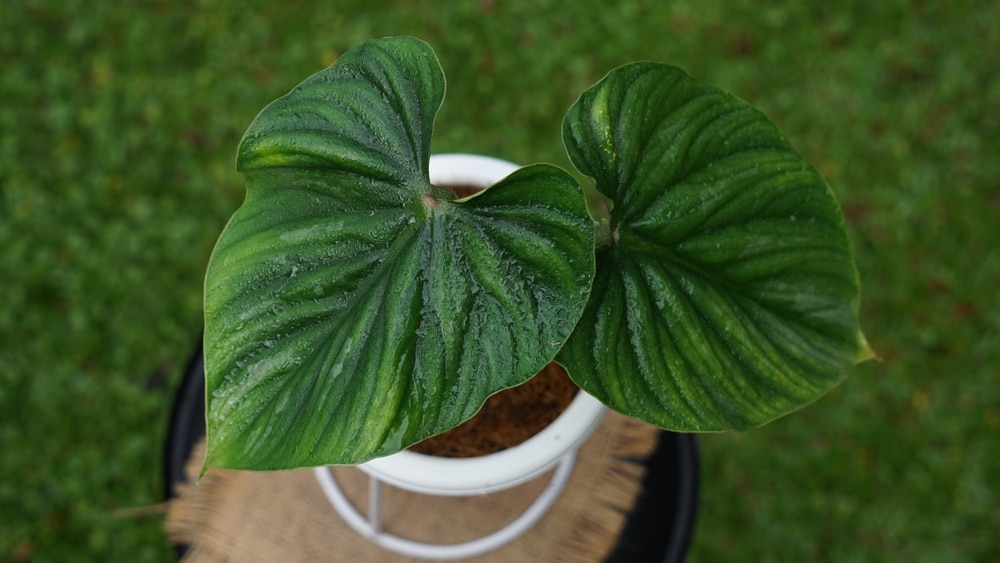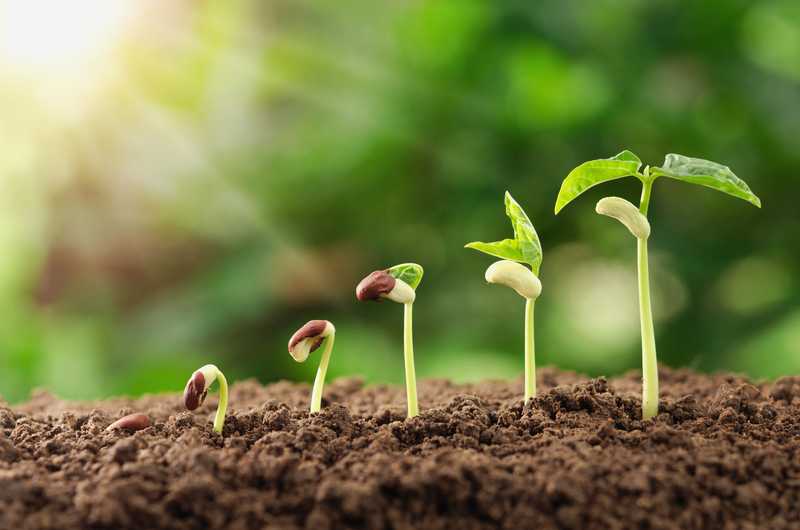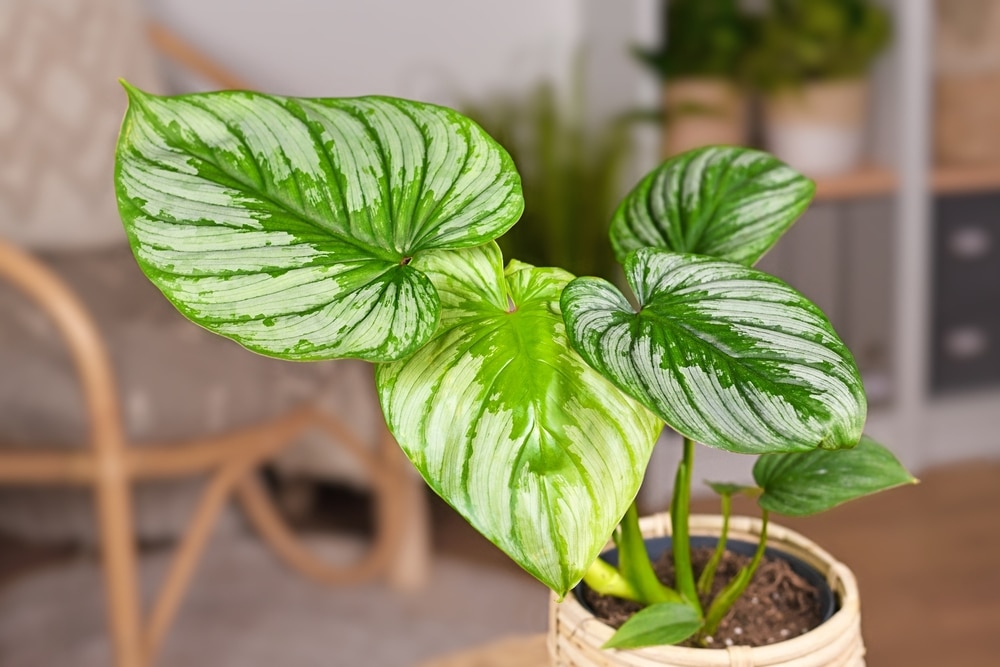
Many people like to design their houses with plants, but most need help selecting them.
There are many reasons behind this confusion. Plants come in a lot of variety. Some of them have big leaves, while others have small ones.
Some require a lot of heat and watering, while some may require no sunlight and less frequent watering.
Similarly, people need clarification when selecting between Philodendron Plowmanii vs. Mamei.
If you are also one of those people, then do not worry. We have done in-depth research for you people.
By going through the following details, you will completely understand the difference between Philodendron Plowmanii and Mamei.
Philodendron Plowmanii vs Mamei: What’s The Difference
| Philodendron Plowmanii | Philodendron. Mamei | |
| Average Plant height | 4-5 feet | 3 feet |
| Leaves | Large heart shaped | Small heart shaped |
| Veins on leaves | More pronounced | Indefinite |
| Upper surface of leaves | Silver grey | Creamy white |
| Care | Low maintenance | High maintenance |
| Temperature and light | Humid/ plenty of indirect sunlight | Humid/ low sunlight |
Philodendron Plowmanii
If you are among those people who like large leaves, then Philodendron Plowmanii is for you because it has large leaves.
This plant is found in a variety of colors, which makes it quite versatile. These plants have leaves that possess shapes quite similar to hearts.
Philodendron Plowmanii is a plant that requires minimum maintenance, which makes it a perfect plant for people who need to learn more about plants.
This plant comes under the category of creeping plants it is because the stem of this plant acts as a support for it.
Normally the leaves of this plant consist of Dark green, light green, and light yellow colors.
The Philodendron Plowmanii leaves are glossy green with deep burgundy undersides and yellow-green flowers.
This has quickly become a popular houseplant due to its unique shape, showy foliage, and easy-care requirements.
Appearance
The Philodendron Plowmanii is an evergreen vine with glossy green leaves that can reach up to 4-5 feet in length. The underside of the leaf is a deep burgundy color, and each leaf has veins running through it.
The stems are thin and wiry, making them easy to train or shape as desired. They produce yellow-green flowers that appear in clusters during the summer and autumn.
Growth
The Philodendron Plowmanii is considered a fast grower, so it requires regular pruning to maintain its shape.
It is best grown in medium temperatures. As an epiphyte, it can also be grown on supports such as tree branches or rocks and will attach itself to aerial roots.
They can also be trained to climb or hang down from support, providing a unique look for any home.
Care
The Philodendron Plowmanii is easy to care for and doesn’t require much maintenance.
It should be watered once the top inch of soil has dried out and allowed to drain completely. Too much water can damage the roots, so make sure to water it only when the soil is dry.
For best results, use a balanced houseplant fertilizer once a month during spring and summer.
Pruning is also important for controlling its growth and ensuring it doesn’t become overgrown or cluttered.
Propagation
The Philodendron Plowmanii can be propagated from stem cuttings or divisions. To propagate through stem cuttings, take a four to six-inch cutting just below a node and plant it in water or moist soil.
Roots will appear within two to three weeks, and the cutting can be transplanted into the potting mix.
For division, carefully remove the entire plant from its pot and divide it into two or more sections. Replant each section in its container filled with a fast-draining soil mix.
The Philodendron Plowmanii is an attractive evergreen vine with glossy green foliage and deep burgundy undersides.
Its easy care requirements make it a great choice for any home or office, and its showy flowers add extra color to any space. With regular watering and pruning, it can be kept at a manageable size while still looking beautiful.
Philodendron Mamei
Philodendron Mamei is a plant that also possesses a heart-shaped leave. This plant is also called “a Silver Cloud” because it has silver color in its leaves.
It has been researched that this plant can even grow in very harsh conditions.
This plant can be found in the family of Araceae. If you are looking for a plant with a high growth rate, then Philodendron Mamei is for you.
Even though this plant is quite aesthetically pleasing, some people are allergic to it because it causes side effects like swelling.
The Philodendron Mamei has become increasingly popular due to its low-maintenance nature and beautiful appearance.
Appearance
The Philodendron Mamei is an evergreen vine with glossy, leathery leaves that grow in various shapes and sizes.
The leaves have a smooth, dark green upper surface and light green undersides. Depending on the plant’s maturity, some leaves can be up to 12 inches long. The leaves are often splashed with pink, white, or other colors.
Light and Temperature Requirements
The Philodendron Mamei is extremely tolerant of lighting conditions, making it a great choice for any room in your home.
Regarding temperature, it prefers warm, humid environments with temperatures between 65-80 degrees Fahrenheit.
Watering Requirements
The Philodendron Mamei is a succulent plant that requires daily watering and fertilizing to thrive. It should be watered whenever the soil feels dry to the touch but don’t let it sit in standing water, as this can lead to root rot.
Soil Requirements
The Philodendron Mamei prefers a well-draining soil high in organic matter such as peat moss or coconut coir. It should be placed in a container with adequate drainage holes to prevent root rot.
Fertilizing Requirements
This plant doesn’t need much fertilizer to stay healthy. A balanced fertilizer with an NPK ratio of 10-10-10 should be applied once a month during the growing season.
It is a fast grower and will require regular pruning to keep it from becoming unruly. Regular pruning of the tips will be needed to encourage the plant to bush out.
It is relatively resistant to pests and disease but can be susceptible to aphids and mealybugs if not properly cared for. If any pests are spotted, it’s important to treat them immediately with insecticidal soap or neem oil.
Propagating the Plant
Stem cuttings or leaves can propagate the Philodendron Mamei. To propagate from stem cuttings, take a 6-8 inch cutting and remove any lower leaves.
Place the cutting in a pot filled with moist soil and keep it in a warm place with indirect light.
New roots should form in a few weeks, and the cutting can be transplanted into its pot when it is well established.
Leaf cuttings are another way to propagate the Philodendron Mamei. To do this, carefully remove one of the lower leaves from the stem and place it on moist soil.
Keep the cuttings moist and place them in a warm area with indirect light. New roots should begin to form after a few weeks, and the leaf can be transplanted into its pot when it is well established.
Philodendron Plowmanii vs. Mamei
It is quite usual for people to need clarification on Philodendron Plowmanii and Mamei.
Both possess the same shape, and sometimes it isn’t easy to differentiate between their leaves, but some factors can help you differentiate between them. The most important of them are:
- How much water do they need?
It has been found that both of these plants need to be watered quite frequently, but overwatering can result in rot in the root.
So it is advised to check the soil before watering it. If the soil is not wet, it shows a green signal for you to water it.
- The Difference in Rate of Growth.
It has been seen that Mamei grows quite rapidly, whereas, comparatively, Plowmanii grows slowly. It is important to know about the growth of a plant before buying it.
People who need to learn more about plants find it quite difficult to maintain the ones with a slow growth rate. They usually get demotivated and fail to maintain them as per instructions.
- Conditions of the Environment
Are you looking for a plant that can grow in an environment with high humidity? If your answer to this question is “YES,” then both Plowmanii and Mamei are humidity lovers. Rather it is advised to keep them in humid conditions.
The experts that average keep the humidity level near sixty-five percent advise it.
Now the question arises how a person can maintain the required humidity level? Therefore, it can be done in many ways, but the easiest of them are:
- Install Humidifiers to ensure that the environment is not dry enough to cause damage to the plants.
- Sprinkle water on the leaves to ensure humidity.
- Side effects
Different plants can cause different kinds of side effects to humans when they come into interact.
It has been found that Plowmanii has a toxic nature and can even cause death when they are swallowed, whereas Mamei just irritates the skin etc.





